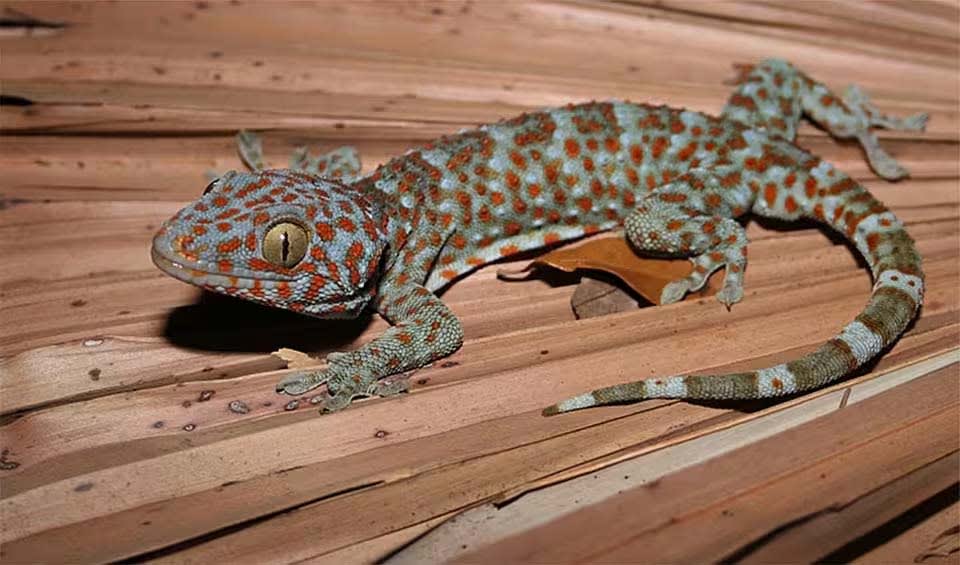One of the world’s largest geckos, it is a species that is admired and feared due to its distinctive features and behavior. Native to rainforests and rural human dwellings in Southeast Asia, including countries like Thailand, Philippines, Malaysia, and Indonesia, it has also spread to some Pacific Islands.
An adult Tokay gecko can grow to a length of 25 to 30 centimeters (10 to 12 inches), making it one of the most robust and sizable geckos in existence. The skin of the Tokay gecko is a canvas of vibrant colors, often a blend of blue-gray or dark gray base adorned with bright orange or red spots. These spots act as a superb camouflage amidst the bark and leaves of trees, allowing it to avoid detection by both predators and prey.
The skin of the Tokay gecko also has another remarkable trait: it is covered in fine hairs known as setae. These setae allow the Tokay to climb smooth surfaces easily, a feature that has been the subject of scientific research for its potential applications in creating better adhesives.
Tokay geckos are known for their aggressive temperament, especially when threatened. They are not timid creatures and have a powerful bite, which they are not afraid to use in defense. They are territorial and solitary animals, with males particularly exhibiting aggression towards intruders during the mating season.
The vocal abilities of the Tokay gecko are perhaps what they are best known for. Their loud and piercing “to-kay” call, from which their name derives, can be heard from a considerable distance and is used by males to attract females and assert their territory. This call is most frequently heard during the evening and nighttime hours when these nocturnal creatures are most active.
Distribution
 Bangladesh
Bangladesh Belize
Belize Bhutan
Bhutan Cambodia
Cambodia China
China East Timor
East Timor Guadeloupe
Guadeloupe Hong Kong
Hong Kong India
India Indonesia
Indonesia Laos
Laos Madagascar
Madagascar Malaysia
Malaysia Martinique
Martinique Myanmar
Myanmar Nepal
Nepal Philippines
Philippines Singapore
Singapore Taiwan
Taiwan Thailand
Thailand United States
United States Vietnam
VietnamAnything we've missed?
Help us improve this page by suggesting edits. Glory never dies!
Suggest an editGet to know me
Terrestrial / Aquatic
Altricial / Precocial
Polygamous / Monogamous
Dimorphic (size) / Monomorphic
Active: Diurnal / Nocturnal
Social behavior: Solitary / Pack / Herd
Diet: Carnivore / Herbivore / Omnivore / Piscivorous / Insectivore
Migratory: Yes / No
Domesticated: Yes / No
Dangerous: Yes / No





